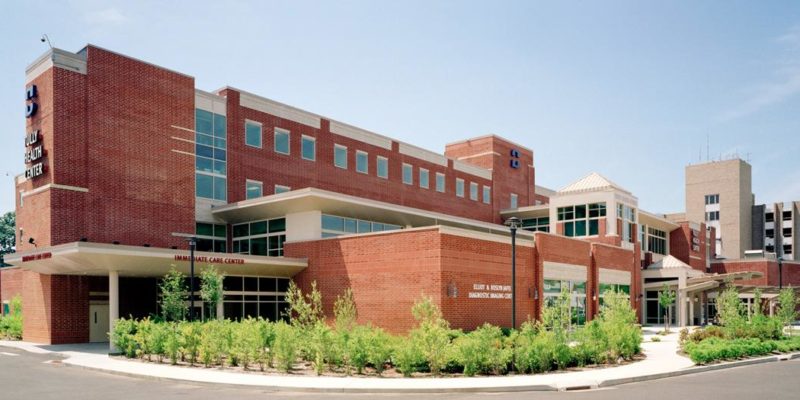For more than thirty years, our healthcare facility specialists have been helping hospitals improve patient quality of life with plants and therapeutic landscapes that reduce patient stress, increase well-being, and strengthen the healing environment.
Beyond the human health benefits linked with landscapes, there are financial benefits as well. Trees and landscaping can increase property value, improve return on investment, and when coupled with a program for sustainability, be part of the strategy for certifications in WELL, LEED and green building.
From meadows to garden views and beautiful outdoor areas, there are ten ways to be more purposeful about hospital landscapes.
- Focus on low maintenance ornamental grasses and flowering perennials that attract birds, butterflies and wildlife; contribute to biodiversity, engage the senses, and are less susceptible to pests and disease.
- Create plant-filled, multi-level, interactive courtyards and gathering spaces with accessible walkways to ensure safety for all levels of mobility.
- Add water features, waterfalls, ponds and contemplative fountains for relaxation.
- Transform underperforming outdoor areas into low-maintenance meadows, adding trees and natural elements that enhance the patient experience.
- Integrate patient-centered landscape features to accommodate limited mobility — handrails, grade-sensitive walkways, accessible ramps, and seating.
- Bring the outside in. Create atriums, green walls and enclosed all-weather landscape pavilions that provide high-value impact, improved access to natural light, and make nature available year-round.
- Choose seasonal plant and tree for their vibrant foliage color and texture; plants that are non-toxic and non-thorny; and emphasize high contrast plantings to help patients with low vision; plant shade trees and lush perennial shrub and herb borders to create a sense of serenity.
- Mitigate environmental risk with organic plant health care applications, integrated pest management and sustainable plant and soil health care practices.
- Have a winter safety and risk management plan in place for 24/7 emergency snow and ice removal services.
- Keep grounds clean around the clock. Parking lots need to be meticulously maintained, shrubs, beds and borders should be trimmed with no overgrown plants or weeds, there should be no litter and nothing that gets in the way of making people feel better just by looking at how beautiful it is.
ELM serves the health care network across Connecticut and Westchester County, New York, including specialized and acute and primary care facilities, ambulatory centers, and major teaching hospitals.
To learn more, contact Bruce Moore Jr., president, at 203-316-5433.
Take a look at how ELM is giving a next generation of healthcare, benefit from nature.
https://www.youtube.com/watch?v=8IMuxQGIAOM
Photo: Stamford Hospital, Stamford Connecticut

